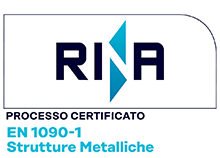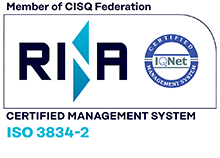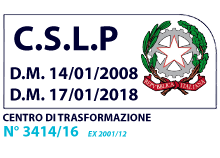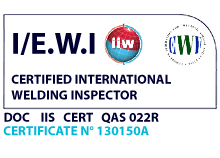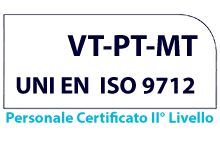Purpose and scope of the UNI EN 1090-1 standard
Dall'entrata in vigore della norma (UNI EN 1090-1:2011), si è fatto un gran parlere di quale sia il campo di applicazione, e o i prodotti coperti dalla marcatura CE con la suddetta norma, recentemente sul sito della commissione europea http://ec.europa.eu/ nella sezione Frequently Asked Questions on the Construction Products Regulation (CPR), è stato reso pubblico il parere della commissione con un elenco non esaustivo di prodotti su cui è possibile apporre il marchio CE.
#31 When does the CE marking have to be affixed on the basis of EN 1090-1:2009+A1:2011?
The CE marking has to be affixed on a construction product on the basis of the harmonised standard EN 1090-1:2009+A1:2011 when all the following conditions are satisfied:
- the product is covered by the scope of EN 1090-1:2009+A1:2011 (please find the indicative, non-exhaustive list of products (266 kB) not covered by the scope of EN 1090-1:2009+A1:2011 as provided by CEN),
- and the product is a structural construction product within the meaning of the Construction Products Regulation (EU) 305/2011 which means:
- the product is intended to be incorporated in a permanent manner in construction works (buildings or civil engineering works), and
- the product has a structural function in relation to the construction work (i.e. its failure will affect the satisfaction of Basic Work Requirement 1 as detailed in Annex I of Regulation EU 305/2011).
- and the product is not covered by a dedicated European product specification (because if a specific harmonised EN, or an European Technical Approval Guideline (ETAG) or an European Technical Approval, or an European Technical Assessment (ETA) for this product exists, the basis for the CE marking is the relevant specific harmonised EN, or the ETApproval, or the ETAssessment).
Note 1:Wind turbines and their towers cannot be CE marked under EN 1090-1. They are subject to the Machinery Directive (MD) and the complete wind turbine system must be CE marked thereunder. One of the essential requirements of the MD is the stability of the machine. Thus, the obligatory CE marking under the MD also covers the stability of the wind turbine. The application of the CPR, in addition to the MD, would not cover additional performance aspects. Furthermore, wind turbine towers are not considered to be construction products under the CPR. Nevertheless, wind turbine towers can be assessed by EN 1090-1 (or others) in order to fulfil the stability requirements under the MD.
Note 2:'Common' fences and railings (balustrades) which merely have the function of preventing a person from falling are not structural products because they do not support (a part of) the structure. In general their failure will affect the satisfaction of Basic Work Requirement 4 – Safety and accessibility in use (as detailed in Annex I of Regulation EU 305/2011) rather than Basic Work Requirement 1 (mechanical resistance and stability). For this reason, these common balustrades cannot be CE marked on the basis of standard EN 1090-1. However, balustrades which do have a role in supporting the structure of the construction work or parts of it have a structural function, i.e. their performance may affect the mechanical resistance and stability of e.g. a building AND they prevent a person from falling, thus are covered by EN 1090-1 and must therefore be placed on the EU market with a DoP and the CE marking.
Note 3: Elaborations under Note 2 also apply to staircases.
From the answer it is clear how the CE marking should be applied whenever:
- The product is covered by the purpose of the UNI EN 1090-1 + A1: 2011 standard, ie the product is not present in the list that you can freely consult in English list of products
 ,it remains to be understood that this list is not exhaustive and complete
,it remains to be understood that this list is not exhaustive and complete - it can be seen that many of the exclusions are to be covered by products covered by appropriate harmonized standards, such as in the case of gates certified according to UNI EN 13241-1 or in the case of cold-formed cold-formed steel pipes (tubes) UNI EN 10219-1 or ETAG technical approvals as in the case of mechanical anchors (dowels), different is the case of decorative elements that do not function as structural elements, hooks or crane components because they are subject to machinery pipes and tanks because they are subject to PED directive, these products obviously can not be subject to CE marking according to UNI EN 1090-1.
- The product is a structural construction product under the Construction Products Regulation (UE) 305/2011, which means that:
- the product is intended to be incorporated permanently in construction works (buildings or works of civil engineering)
- the product has a structural function in relation to construction work (ie its failure will affect the satisfaction of basic requirement 1 as detailed in Annex I to Regulation (UE) 305/2011.
On the Confindustria site of bergamo https://www.confindustriabergamo.it this distinction is simplified as follows:
To understand pragmatically whether a carpentry product is subject to CE marking according to EN1090, it is to be considered whether removing from the work this component is concerned with the strength and stability of the whole work or one of its parts, privileging in this analysis, the stability of the work with respect to the security of people (covered by other regulations). For a correct interpretation of the doubts, see the FAQs published by the European Commission and the clarification document published by the Ministry. For a correct interpretation of the doubts, see the FAQs published by the European Commission and the clarification document published by the Ministry.
Other possible cases where CE marking for Structural Carpentry Products is foreseen:
- if they fall under Regulation 305/2011, as covered by other harmonized standards, they should be CE marked with reference to those standards and not to EN 1090.
- if they do NOT fall under Regulation 305/2011 (they are not classified as "construction products" under Regulation 305), they must be marked CE only if they are subject to other regulations and directives (as in the case of structures, machinery parts, pressure tanks elevators, etc. which have a structural function in the article, but are not structural elements of the work that contains the same artifact) and not according to EN 1090.
- If they "collaborate" with the building structure then CE marking according to EN 1090 applies (eg industrial shelves supporting the walls and / or roof of the warehouse).
N.B. In Italy carpentry products incorporated in the structure of the work, but not considered as construction products (according to EU Regulation 305/2011 and for which the CE marking according to EN 1090 is not applicable) may be subject to the Technical Standards on Buildings (as in parapet rails) and therefore must be calculated by a professional, and we would add as a note: produced by a DM transformation center 14/01/2008

